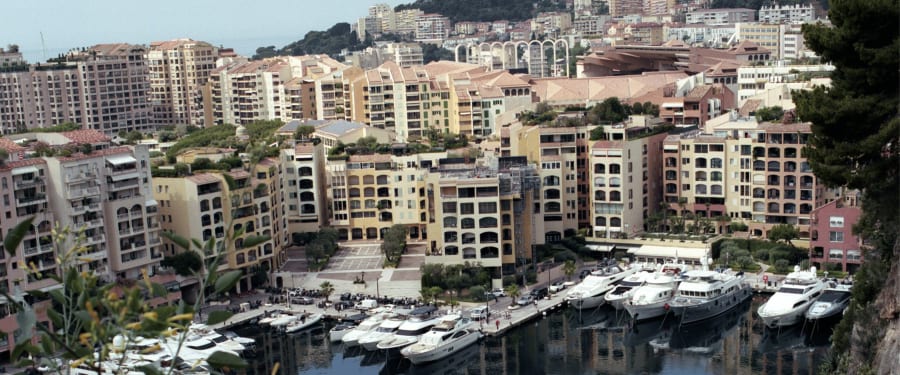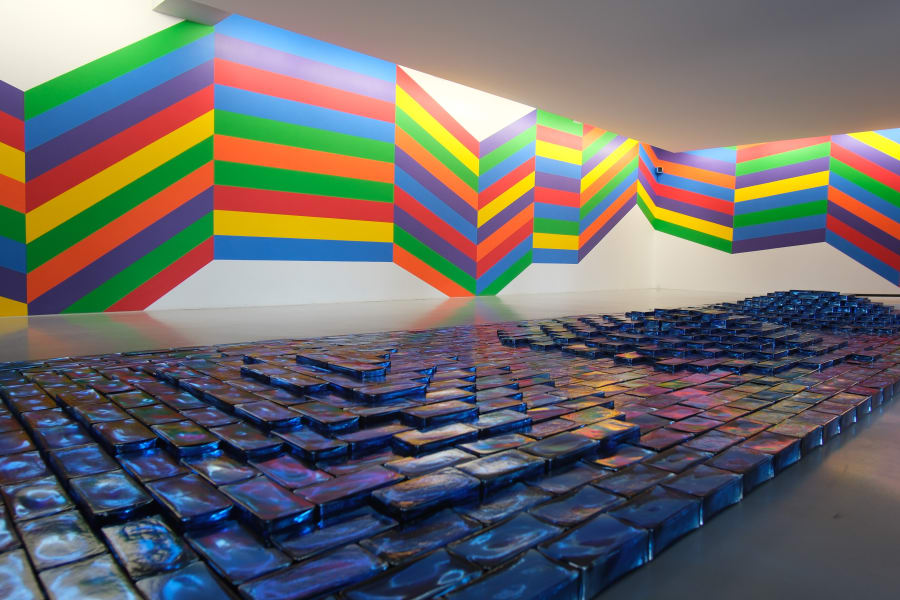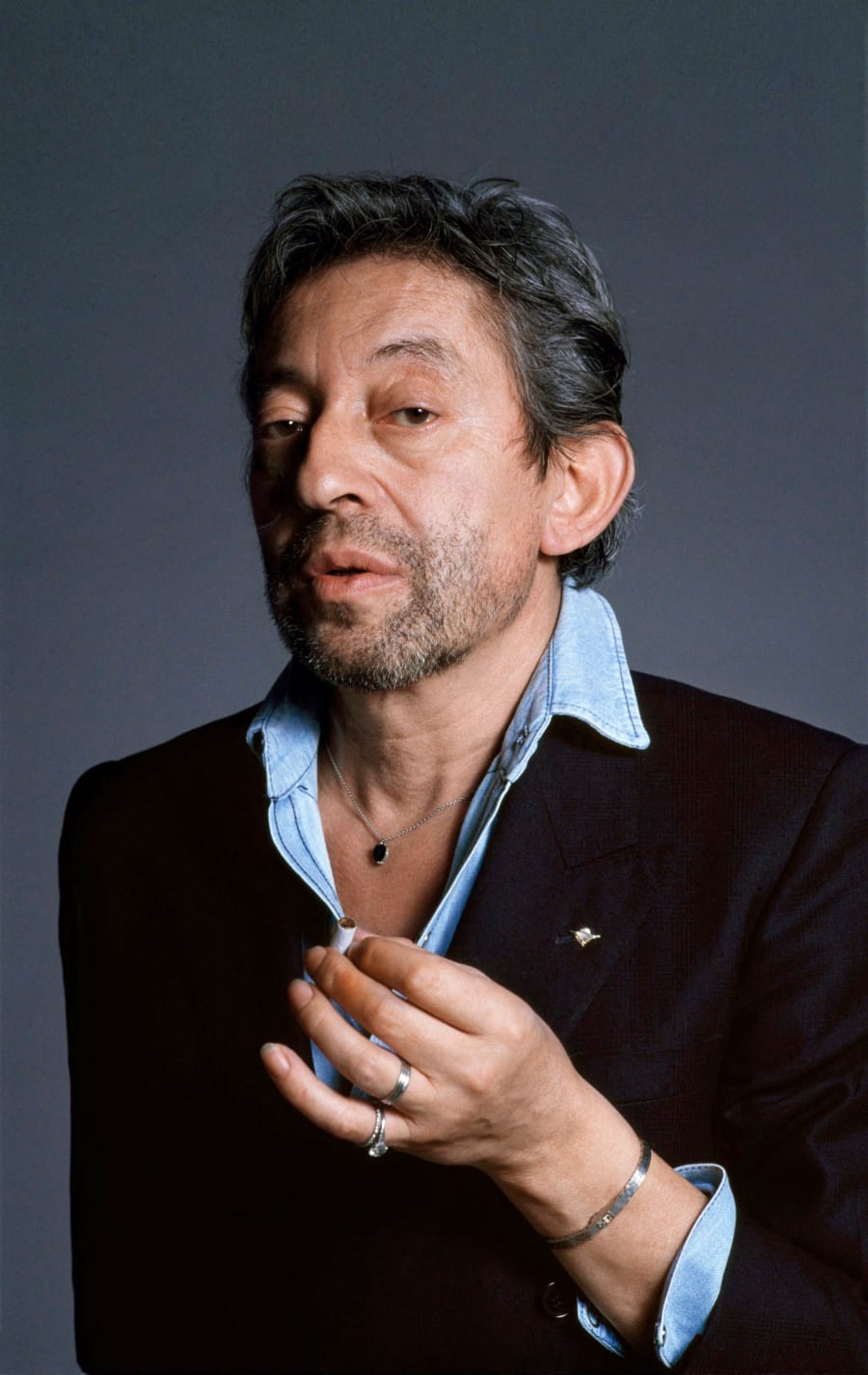From his bed, positioned diagonally across his first-floor bedroom, Jean Cocteau could glimpse the sky and the two massive towers of a medieval castle. Cocteau was fond of saying: ‘In Milly, I discovered a frame.’ ‘A cinematographic frame, probably,’ specifies Muriel Genthon, director of Cocteau’s house in Milly-la-Forêt, about 60 kilometers south of Paris. The house, where Cocteau regularly retreated from Parisian life between 1947 and his death in 1963, is now a dedicated museum. While his work has long been confined to the field of literature, his polymorphic personality and the way he blended writing, drawing, cinema, and a taste for the stage within his oeuvre may well be behind the renewed interest he seems to be experiencing today. A recent example of which: Ali Cherri’s 2025 installation at the Bourse de Commerce – Pinault Collection, inspired by the 1932 film The Blood of a Poet.
It was the actor Jean Marais, with whom Cocteau had a passionate love affair, who discovered the house in Milly: a refuge to escape the excitement of Paris. The house is surrounded by waterways derived from the castle’s former moats, and an orchard where apples and pears grow. ‘The atmosphere is that of his film Beauty and the Beast (1946),’ adds Genthon, pointing to ‘the Turk,’ a bust adorning the front of the house, given to Cocteau by Christian Bérard, painter and decorator for the film. A recently acquired photograph shows Cocteau standing next to this sculpture, in the white bathrobe he liked to wear. On either side of the entrance steps are two sphinxes whose faces are those of Madame du Barry, courtesan to King Louis XV.
Cocteau loved objects. The interior of the house bears witness to this, with its distinctive intimacy. ‘It’s said that his friend Madeleine Castaing had a hand in the decoration of the house,’ Genthon affirms. Indeed, the taste of the Saint-Germain-des-Prés antique dealer, who had a shop at the corner of rue Jacob and rue Bonaparte, is evident in the red velvet curtains, the leopard-covered walls, the mermaid from a carousel serving as coat rack, the narwhal tusk from Spain, the rhinoceros foot box, the golden palm trees, the automaton jazz musician gifted by Marais, the 1950s Chinese crane, the cast of Cocteau’s long hands, the writer André Gide's armchair, another chair made of buffalo horn and fur, the relief painting of a hot-air balloon caught in a storm, the camel saddle whose feet are swords...
Cocteau worked everywhere – on the numerous tables, in his bed, and even on the floor. Here and there books like The Devil in the Flesh (1923) by Raymond Radiguet, whom he loved madly, are placed alongside opium pipes and writing and drawing materials, inks and old American felt-tip pens, from a time when they couldn’t be found in France. Photos are hung all over, as well as Jean Harold’s collages: Pablo Picasso’s head on the bust of a Velázquez menina, or Jean-Paul Sartre’s on the body of a pope.
Several objects like the bronze fawns, copies of antiques, that surround the fireplace, were given to Cocteau by Francine Weisweiller, one of his patrons and great friends, who can be seen in a number of photographs. It was for her that he created tempera frescoes in her house in Saint-Jean-Cap-Ferrat in the South of France. ‘Santo Sospir is a tattooed villa,’ Cocteau proclaimed, evoking how he worked during the summer of 1950, on ladders, without preliminary drawings, with charcoal and colored powders diluted with raw milk. This artisanal, almost primitive technique contrasted with the refined elegance of the place.
Built in 1931, the house had been tastefully decorated by Castaing. Everything began when Cocteau was staying there for just a few days and he asked Weisweiller if he could draw a simple head of Apollo on a living room wall. From there, his line went on to invade all the rooms, overflowing from walls to ceilings, somewhere between drawing and writing, in an oneiric and erotic atmosphere that transformed each space into a theater of his obsessions. The house appears in his film Testament of Orpheus (1960), thereby immortalizing these murals in his own cinematographic work. Cocteau often returned there afterward, continuing this intimate conversation with the walls. Today, the house remains closed to the public, preserving this secret dialogue between the artist and his environment.
On Cocteau’s death in 1963, Edouard Dermit, his adopted son, inherited the Milly house. A painter who had acted in The Terrible Children (1950), directed by Jean-Pierre Melville, and with an adapted screenplay by Cocteau, Dermit decided to turn it into a museum. Then after his death, Pierre Bergé bought it, undertook major renovations, and it opened as a museum in 2010. The resale of the house led to the creation of a public interest group (GIP), consisting of the Île-de-France region, the Essonne department, the town of Milly-la-Forêt, and the Centre Pompidou. Today, the Pierre Bergé – Yves Saint Laurent Foundation remains among the principal lenders of the exhibited works, such as the 1921 portrait of Cocteau by Marie Laurencin.
In 1959, the elected officials of Milly-la-Forêt commissioned Cocteau to decorate the village’s small 12th-century chapel, Saint-Blaise-des-Simples, a former leper hospital. He had already decorated the Chapelle Saint-Pierre de Villefranche-sur-Mer, the wedding hall of the Fréjus town hall, and the Notre-Dame de France church in central London. On the top floor of the house, a comprehensive exhibition presents numerous preparatory drawings, films documenting the inauguration of the different sites, and its recent restoration.
The chapel in Milly also became Cocteau’s burial place. All around his tomb, drawings of tall medicinal plants seem to levitate on the walls, and there is an ascension of Christ above the altar. In these clear line drawings, we find all the elements of the artist’s imagination. Christ’s hand is curiously haloed. Why? ‘To make people talk!’ Cocteau would no doubt have replied.
Anaël Pigeat is an art critic, editor-at-large for the monthly publication The Art Newspaper, journalist for Paris Match, and exhibition curator.
English translation: Art Basel.
Caption for header image: Jean Cocteau's house in Milly-la-Forêt, Île-de-France region. Photograph by Laurence Godart.
Published on July 24 2025.


